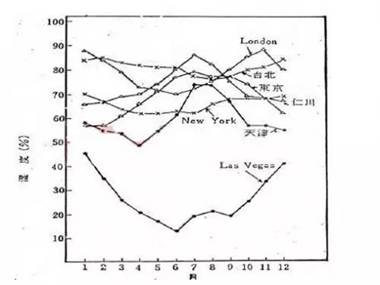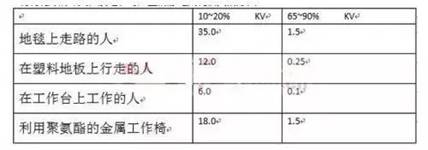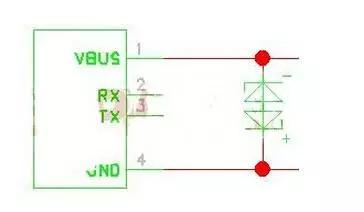How to control the motor with the aid of low side current induction
Time:2023-03-25
Views:1032
Recently, I have been conducting ESD testing for electronic products. From the test results of different products, it is found that this ESD is a very important test: If the circuit board is poorly designed, when static electricity is introduced, it can cause product crashes and even damage to components. Previously, I only noticed that ESD can damage components, but I didn‘t expect to pay enough attention to electronic products.


ESD, also known as Electrostatic Discharge. From the knowledge we have learned, static electricity is a natural phenomenon, usually generated through contact, friction, electrical induction, and other methods. It is characterized by long-term accumulation, high voltage (which can generate thousands of volts or even tens of thousands of volts of static electricity), low electricity, small current, and short action time. For electronic products, if the ESD design is not well designed, it often leads to unstable operation and even damage of electronic and electrical products.
Two methods are commonly used for ESD discharge testing: contact discharge and air discharge. Contact discharge refers to discharging the equipment under test directly; Air discharge, also known as indirect discharge, is generated by coupling a strong magnetic field to adjacent current loops. The test voltage for these two tests is generally 2KV-8KV, and the requirements vary from region to region. Therefore, before designing, it is necessary to clarify the market targeted by the product.
The above two situations are basic tests conducted for electronic products that cannot work due to human electrification or other reasons when the human body is in contact with the electronic product. The following figure shows the air humidity statistics for different months of the year in some regions. From the figure, it can be seen that the humidity in Lasvegas is low throughout the year. Special attention should be paid to ESD protection for electronic products in this area.

The humidity situation varies from place to place, but at the same time in a region, if the air humidity is different, the static electricity generated is also different. The following table is the collected data, from which it can be seen that static electricity increases as air humidity decreases. This also indirectly explains the reason why there is a large amount of electrostatic sparks generated during the winter in the north when undressing.

Since static electricity is so harmful, how can we protect it? When designing electrostatic protection, we usually take three steps: preventing external charges from flowing into the circuit board and causing damage; Prevent external magnetic fields from damaging the circuit board; Prevent hazards caused by electrostatic fields.

In actual circuit design, we will use one or more of the following methods for electrostatic protection:

In actual circuit design, we will use one or more of the following methods for electrostatic protection:
1. Avalanche diode for electrostatic protection
This is also a method often used in design. A typical practice is to connect an avalanche diode in parallel to the ground on a critical signal line. This method utilizes avalanche diodes to respond quickly and have the ability to stabilize clamping, which can consume accumulated high voltages in a relatively short time to protect the circuit board.
2. Circuit protection using high-voltage capacitors
In this practice, ceramic capacitors with a withstand voltage of at least 1.5 KV are usually placed at the I/O connector or key signal location, while the connecting line is as short as possible to reduce the inductive reactance of the connecting line. If a capacitor with low withstand voltage is used, it will cause damage to the capacitor and lose its protective effect.
3. Using ferrite magnetic beads for circuit protection
Ferrite magnetic beads can effectively attenuate ESD current and suppress radiation. When faced with two issues, a ferrite magnetic bead can be a good choice.
4. Spark gap method
This method is seen in a material. The specific method is to use mutually aligned triangular copper sheets to form a microstrip line layer composed of copper sheets. One end of the triangular copper sheet is connected to the signal line, and the other triangular copper sheet is connected to the ground. When there is static electricity, it will generate discharge and consume electrical energy.
5. Protection circuit using LC filter method
The filter composed of LC can effectively reduce high-frequency static electricity entering the circuit. Inductive reactance characteristics of inductors can effectively inhibit high-frequency ESD from entering the circuit, while capacitors shunt the high-frequency energy of ESD to the ground. At the same time, this type of filter can also smooth signal edges and reduce RF effects, further improving signal integrity in terms of performance.
6. ESD protection with multilayer boards
When funding allows, selecting multilayer boards is also an effective means of preventing ESD. In multilayer boards, with a complete ground plane close to the wiring, ESD can be more quickly coupled to the low impedance plane, thereby protecting the role of key signals.
7. Method of reserving protective tape around the periphery of a circuit board
This method usually involves drawing wiring around a circuit board without adding a bonding layer. If conditions permit, connect the wiring to the housing, and note that the wiring cannot form a closed loop to avoid creating a loop antenna and introducing greater trouble.
8. CMOS devices or TTL devices with clamping diodes are used for circuit protection
This method utilizes the principle of isolation for circuit board protection. Due to the protection of these devices with clamping diodes, the complexity of design is reduced in actual circuit design.
9. Decoupling capacitors are often used
These decoupling capacitors need to have low ESL and ESR values. For low-frequency ESD, decoupling capacitors reduce the area of the loop. Due to their ESL effect, the electrolyte effect is weakened, which can better filter high-frequency energy.
In short, although ESD is terrible and can even bring serious consequences, only by protecting the power and signal lines on the circuit can it effectively prevent ESD current from flowing into the PCB. Among them, my boss often said, "A good grounding of a board is the king‘s way." I hope this sentence can also bring the effect of breaking the skylight to everyone.











